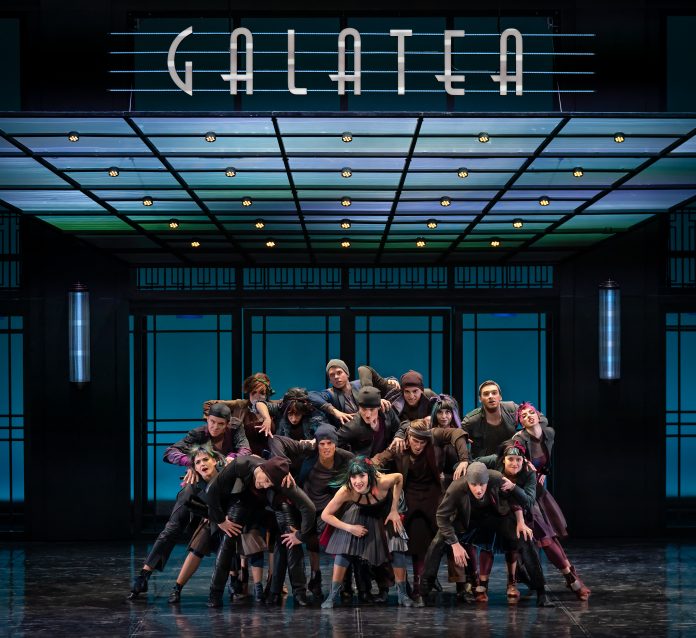Modern, pop ballet draws large crowds but isn’t everyone’s cup of tea
By Brooklynn Wong
Eifman Ballet of St. Petersburg’s “The Pygmalion Effect” is a production that should come with a disclaimer. A classical, high-culture ballet it is not, like some might be led to believe when they hear a Russian ballet is coming to town. It is instead a literal, comical and modern show that does not feature much ballet per se—not one movement of the show is danced in pointe shoes.
Rather these well-trained dancers loan their balletic backgrounds to a different type of movement, and almost more acting is involved than dancing.
The show ran Memorial Day weekend, May 24-26, at the Segerstrom Center for the Arts.
Opening night that Friday was a packed house, with lots of young girls and Russian-speakers in attendance.
The ballet is a new creation by Artistic Director Boris Eifman, and tells the story of protagonist Gala, a poor girl who, after observing a ballroom dancing competition, decides she wants to be part of that world, gets into the good graces of and falls in love with superstar Leon, and he accepts the challenge of partnering with her and turning her into a ballroom dancer.
Traditional training is not working, and it’s determined that the only thing that will work is a psychedelic-looking helmet placed on her head that turns her into a mechanical dancing doll. They win the next competition.
The sets are rather impressive, especially the dance studio. And the flexibility and strength of the dancers’ bodies were a beautiful spectacle all their own, especially that of Lyubov Andreyeva, who played Gala that evening.
The group ballroom numbers, where the stage was filled with several pairs, were the best parts.
The ballroom dancing costumes were great too.
To children and to those who knew that the ballet would be one of this nature, it probably made for a fun night at the theater. The feedback leaving the theater seemed to be overwhelmingly positive.
However, it was unconventional, to say the least.
Its humor was very simplistic and its quirks were all over the place—some unnecessary nudity to kick off the show, the psychedelic sci-fi helmet being the answer to the problem of Gala’s lack of dance talent, and some bizarre long bows at the end of the show, that included almost every character coming out for applause more than once.
And there were holes in the story. No context was provided, so the crowd was left to guess at, wonder about, or just turn a blind eye to the fact that we didn’t know in what country or in what time period this was happening.
And in the end, it wasn’t clear whether Leon had mutual feelings for Gala, whether she permanently retained her dancing abilities, whether it was as simple as them living happily ever after and her leaving her street life behind, or whether it was all just a dream.
Other than the ballroom scenes, there was little actual dancing talent on display, and the movement and expressions during the acting were cheesy and over the top. The way of making known that Gala was an uncivilized, unrefined woman, was seemingly to have her constantly falling all over herself. It got a little old.
All told, it was not the typical thing that one expects when going to see a Russian ballet. However it had fun moments.
And that’s what Artistic Director Eifman does—he’s unconventional. He’s created his own style, and his own theater. His ballet ensemble was formed in 1977. His style is what some see as a new trend in Russian ballet—away from the traditional and towards the experimental and perhaps revisionist.
The show played three more times through the weekend, and is now in Berkeley before it goes to New York.









